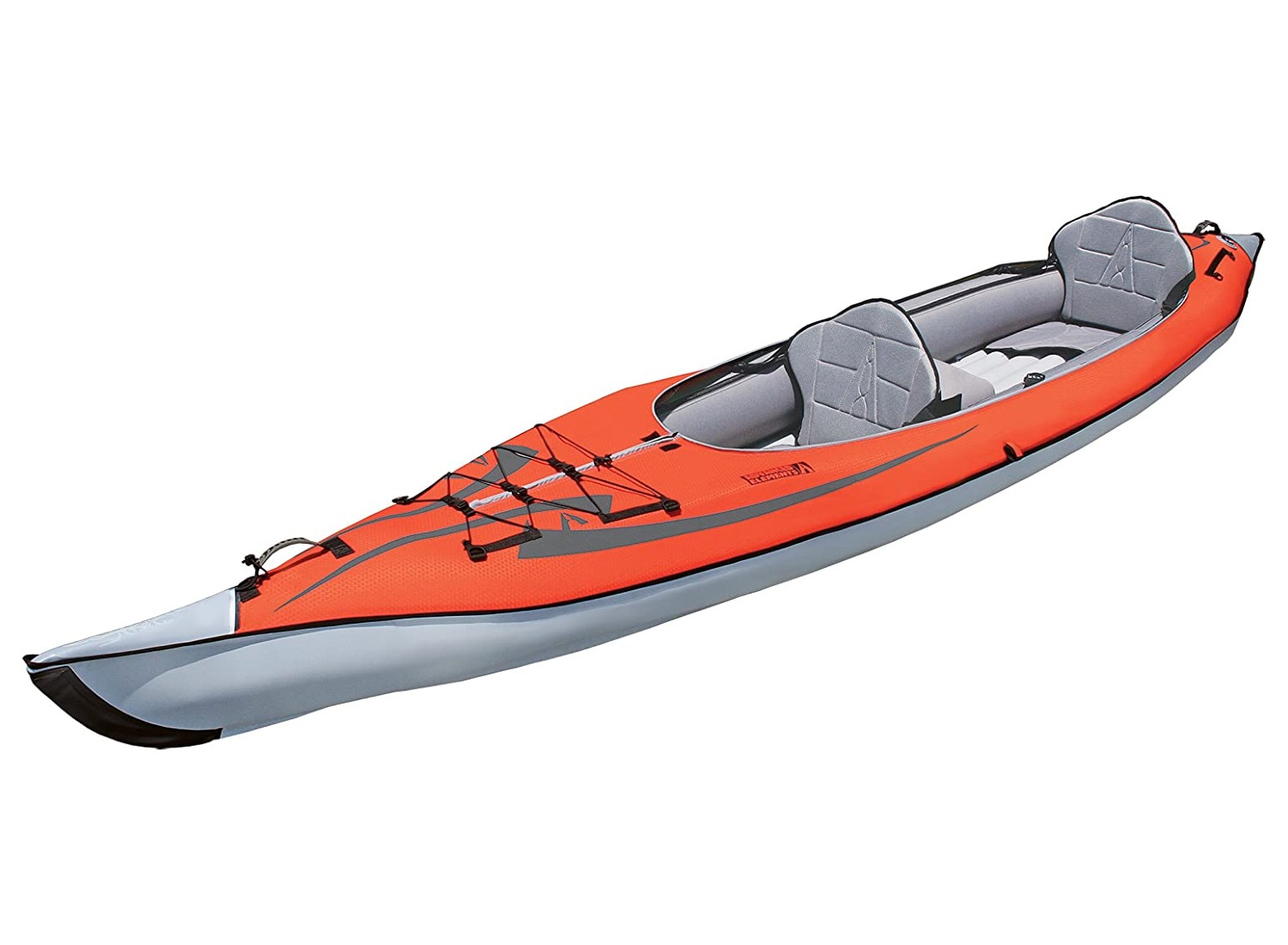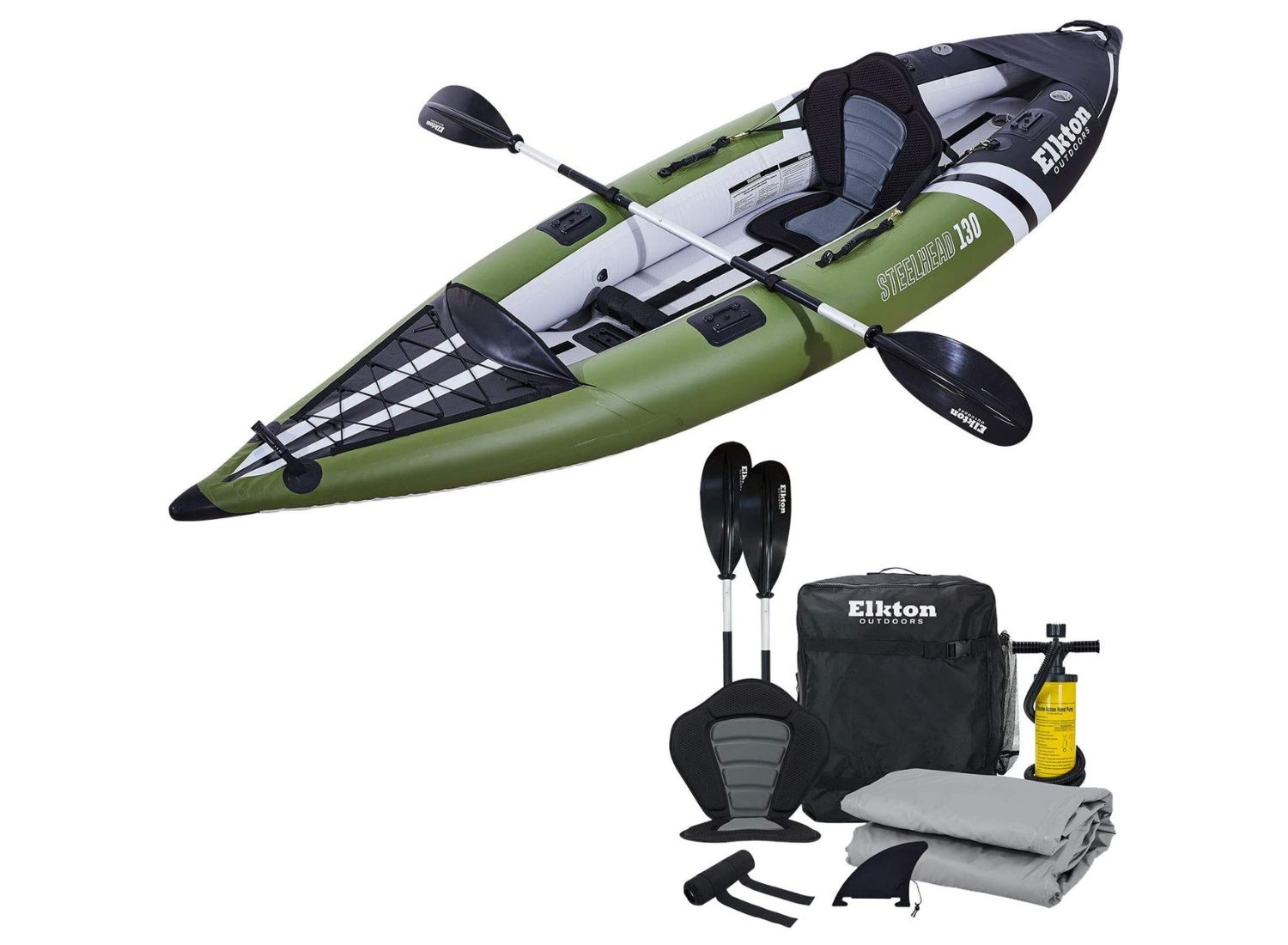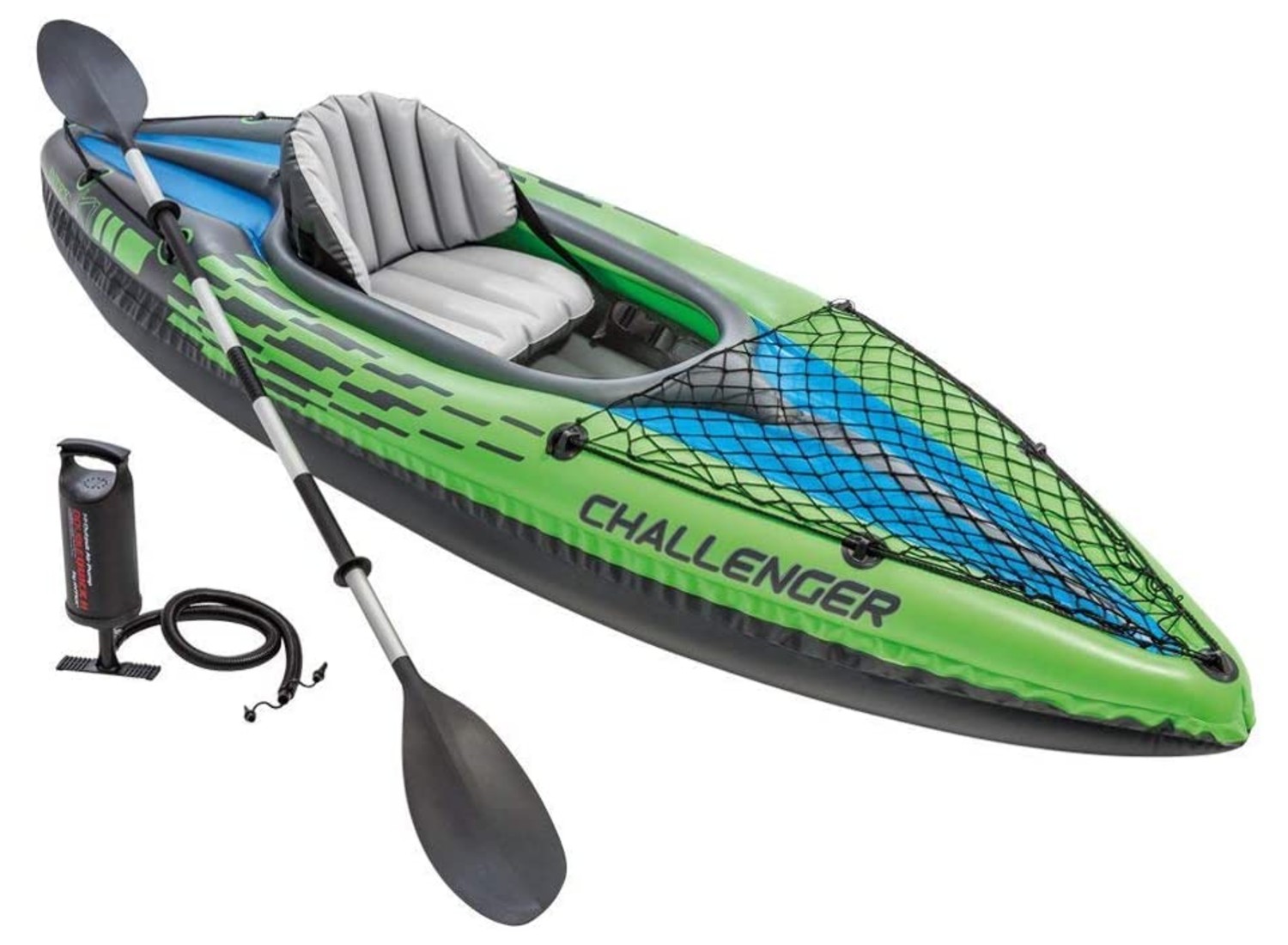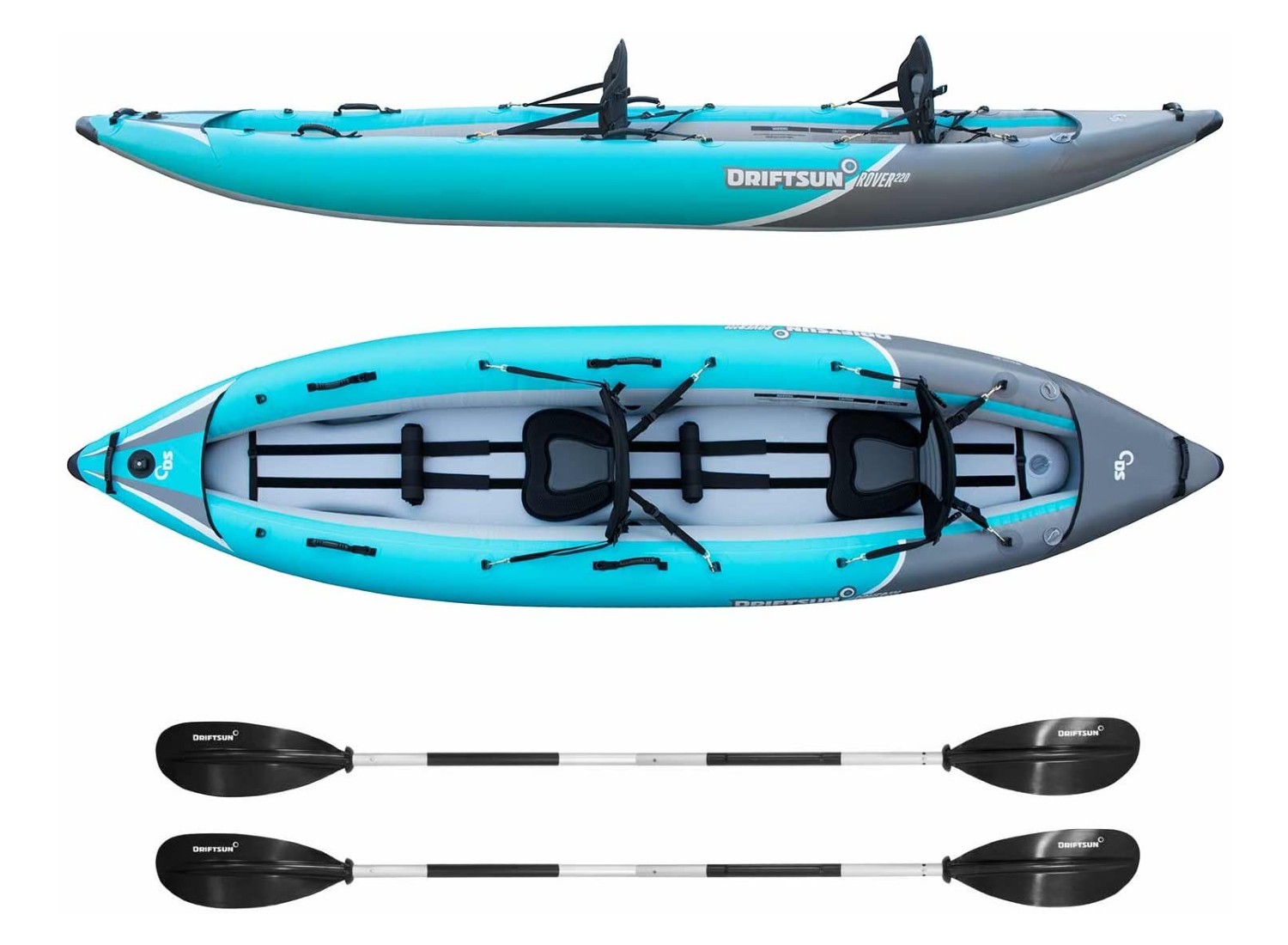Enjoy Getting Out on the Water With the Best Inflatable Kayaks
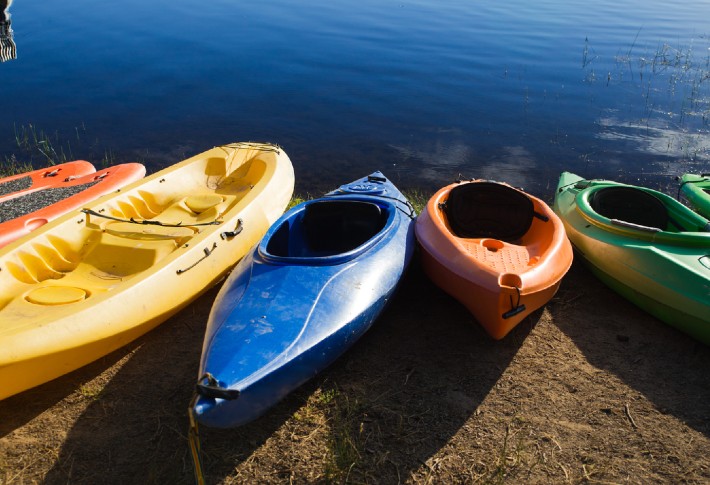
The story has changed since then; they are quite popular now for white water, touring, and general use. And as manufacturers continue improving their methods and materials, these kayaks will continue to grow in prominence. Today, inflatables are a real alternative to hard-shell kayaks, and we love them. In the following buying guide, we'll discuss the very best inflatable kayaks of 2024 and all that you need to know to buy one confidently.
Kayaks have been around since the age of the Eskimos in Greenland for hunting. They were efficient, fast, and very maneuverable. Today, Inflatable kayaks (also called air kayaks or blow-up kayaks) are gaining popularity among watersports enthusiasts. In their early years, inflatable kayaks were not well regarded because of their many design flaws. They were quite vulnerable to damage, and their maneuvering was not comparable to a hard-shell kayak.
Our Top Picks
- Best Overall: Advanced Elements Inflatable Kayak Shop Now ➔
- Amazing Features: Elkton Outdoors Blow Up Kayak Shop Now ➔
- Affordable Buy: Intex Challenger Inflatable Kayak Shop Now ➔
- Most Durable: Driftsun Rover Inflatable White-Water Kayak Shop Now ➔
- Best Inflatable Kayaks Buying Guide
- 1 The Questions to Help You Choose the Best Inflatable Kayak
- 2 Where do you plan to use the kayak?
- 3 Who and how many people will use the kayak?
- 4 What are you going to use it for?
- 5 How comfortable is it?
- 6 What are the Types of Inflatable Kayaks?
- 7 Sit-on-top kayaks
- 8 Self-bailing kayaks
- 9 Sit inside kayak
- 10 Canoe type
- 11 What Materials are used for Inflatable kayaks?
- 12 Polyvinyl Chloride (PVC)
- 13 Nitrylon
- 14 Hypalon
- People Also Asked
Presenting the Best Inflatable Kayaks of 2024
Best Overall
Advanced Elements has perfectly balanced portability and performance in this inflatable kayak. This is a fifteen-foot tandem kayak that weighs 36 pounds and has a 300-pound weight capacity making it perfect for couples or a parent and child. Simultaneously, due to its large cockpit measuring 3’ 7” x 1’ 4.5”, you will have enough room for storage on longer trips and won’t have to worry at all about comfortability.
Besides the benefits that come from this kayak’s size, it has other pluses. Namely, this kayak has a rigid bow and aluminum frame reinforcements which allow it to glide through water similarly to a hard-shell kayak, and it is made of triple-layer polyester with a double PVC coating to increase durability. It also easily transforms from full-size to travel-ready quickly with its smart inflation system and compact deflated design. All-in-all, we think this kayak is worthy of our best overall award due to its helpful size, sturdy nature, and portability. If what you are looking for is an efficient kayak with a cutting-edge design, then this is one for you.
Key Features
- Fifteen-foot tandem kayak
- Features triple-layered polyester and double PVC coating
- Large cockpit with significant storage
- Condenses significantly and fits in a carrying bag.
Amazing Features
The Elkton Outdoors Blow-Up Kayak is a great choice for anglers looking to take on the open waters in comfort and safety. This one-person inflatable kayak has many features that make it an attractive choice for any fisher. The solid drop stitch floor allows for a steady and sure bait-casting position, perfect for when you need to cast your line quickly and accurately. The kayak is specifically designed for fishing, with front bungee storage and multiple universal hard mounting points that can securely hold fishing rods or other fishing essentials. Plus, the padded seat really helps keep you comfortable while you’re waiting for bites!
The kayak is also built to last even in rough waters, with a 1000D reinforced layered PVC that helps it bounce off obstacles like rocks and logs. It also has a self-bailing floor with well-positioned ports to quickly drain any excess water that may splash up onto the kayak. This is an amazing kayak for fishers and casual kayakers.
Key Features
- Ample legroom and comfortable seating
- Plenty of storage for food, drink, and tackle
- Durable PVC can withstand bumps into objects
- Easy to set up and tear down
Affordable Buy
The Intex Challenger Kayak is one of the best inflatable kayaks on the market. It combines durability and agility to give you some added safety on calmer waters, and the cockpit of the Intex challenger kayak is designed for comfort, maximized space, and easy navigation. If you are like me and what to maximize maneuverability and comfort, then this is the kayak for you.
This Kayak has some wonderful bonus features. For example, it has an inflatable and removable seat, and its cargo net gives you space to store extra gear. I’d love all that extra space for shipping. In addition to its storage features, this kayak has a skeg grab line on both ends for assistance getting it in and out of the water.
Key Features
- Measures 30 by 15 by 108 inches (W x H x D)
- Weighs 27.2 pounds with a 220-pound weight limit
- Inflatable and removable seat
- Features a removable skeg and a grab line
- Includes a paddle, a pump, and a carrying bag
Most Durable
The Driftsun Rover 220 Tandem Inflatable Kayak is very versatile and durable, making it fantastic for active couples. This inflatable kayak works incredibly well in both flat and rough water and combines the highest quality materials and workmanship, all at a fair price. That’s exactly what I want to hear as someone who likes to explore the waters with their partner all day long!
Getting a little bit deeper into the details, this kayak is made from reinforced layered PVC and has a tarpaulin bottom for protection from punctures. It weighs only 28 lbs, yet it can carry up to 600 lbs total; how impressive is that?! it also is very stable due to its flat-water tracking fin, and it comes with a hand pump, paddles, and a travel bag too. What a great kayak!
Key Features
- Large tandem kayak measuring 12.5’ x 38” x 13”
- Constructed from reinforced layered PVC, with a tarpaulin bottom to provide durable protection from punctures
- High load capacity of 600 lbs and weighs up to 28 lbs
- Great adjustable padded seats with high back support
Best Inflatable Kayaks Buying Guide
Kayaking is the perfect fun outdoor activity for beautiful summer days. However, the fun can get ruined at times by the extra effort it takes to store and transport the kayak itself. Inflatable kayaks are a great alternative to regular kayaks because they are a lot more portable. They are much easier to move around with, and even though inflatable kayaks may not have the same level of performance as hard-shell kayaks, you can enjoy them for many of the same fun activities.
Regardless of your destination, you can easily stash a non-inflated kayak in your carrier bag and inflate it upon arrival. Likewise, if you don’t have enough space to store your kayak in your garage or shed, an inflatable kayak may solve your problem. All you need to do is deflate your boat between seasons of use, and boom; you now have a boat that is much easier to pack away.
There’s more that you need to know about inflatable kayaks before buying one. Read on to learn how to select one that is perfect for your needs.
The Questions to Help You Choose the Best Inflatable Kayak
Where do you plan to use the kayak?
Before you invest in a new inflatable kayak, you need to know the kind of places you’ll be visiting first. Is the body of water you plan to kayak a flat lake or a fast river? Do you plan to head to open waters such as a lagoon? Depending on the type of water you’ll be kayaking on, you’ll have different needs. If you plan on staying on calmer waters, there’s no need to choose a kayak that is designed for fast-moving waters. Likewise, if you want to race down rivers, don’t pick a kayak for fishing on a lake.
Who and how many people will use the kayak?
Your size matters a lot when purchasing a kayak. If you are taller or larger than average, you’ll need a bigger kayak with a lot more legroom and a higher weight capacity. I know I want to be comfortable when kayaking, so a short kayak with little legroom is out of the question for me. You, of course, don’t have the same body or build as I do; a smaller kayak may be perfectly comfortable for you. Whatever your size is, choose a kayak accordingly.
The size of the kayak is also determined by the number of people who will use it i.e. if it is a tandem or single seater. If you are not sure if you want to kayak alone or with a partner, it may be best to get a tandem inflatable kayak. Most tandem kayaks can be used alone if they are the right size, and thus are a great bet for those interested in tandem and solo kayaking. Obviously, if you know you’ll only go out on the water with a partner or only kayak alone, buy a tandem or solo kayak, respectively.
What are you going to use it for?
Like with location, the use of your kayak will dictate the shape and features of your kayak. If you plan on whitewater kayaking, you’ll want something shorter and more maneuverable than a standard recreational kayak.
You can, of course, some kayaks are multiple-purpose, but a kayak specifically designed for one task will be better at that task and overall be more fun. For example, you can fish in just about any kayak, but kayaks for fishing improve the experience dramatically. Fishing kayaks have storage spaces and specialized fishing kayaks, such as sit-on-top models, are great for angler fishing. Similarly, a canoe-style kayak is an appropriate fishing option as well. They are wider and allow you to move around easily, and carry lots of equipment and your catch.
Whatever you want to use your kayak for, consider if it is better to invest in a specialized boat or a general one. I personally would go with a general, unspecialized kayak since I plan on staying in calmer waters for my kayaking activities, but to each their own.
How comfortable is it?
Depending on the activity, you may be in your kayak for a long time; that’s why comfort is so important. Kayaks are sort of notorious for bad seats, but you can find an inflatable kayak with great seats out of the box. The price level of the kayak matters here, as you get what you pay for. Casual kayaks have comfier chairs than sport kayaks and thus are a great option for long trips out on the lake. You want a comfortable kayak that doesn’t hurt your back to use. In the worst-case scenario, ensure the seat is at least removable if it looks questionable so that if it doesn’t hold up to your needs you can swap it out later for some aftermarket seats. (Pro tip: If your choice is a seat with a high back, pair it with a seat-friendly life jacket. A bulky life jacket stuck between you and your seat is very uncomfortable.)
Kayaks should also not be a challenge to get into. If you, more often than not, have trouble getting in and out of a kayak, you may be better served by a sit-on-top kayak. They are significantly easier to get in and out of but are more prone to tipping because the center of gravity is higher. Practice getting in and out of the kayak several times to be sure you can do it without any problems.
What are the Types of Inflatable Kayaks?
Before we talk about kayak types, a brief word on kayak lengths. Kayak lengths range from about 6’ to 14’ or even greater. Generally speaking, short kayaks (between 8 to 12 feet) are more agile but slower and harder to paddle straight and work well for agile river paddling and or other nimble application. On the other hand, long kayaks (between 12 to 15 feet) are more efficient, faster, and easier to control. Additionally, they are generally more stable and have more room for gear. They’re the ones for you if you prefer long days of paddling or need more room for tackle and stability on open water.
Now that we know more about kayak lengths let’s talk about four common kayak designs below.
Sit-on-top kayaks
This type of kayak has no enclosed cockpit. Just like the name implies, you basically sit on top of the kayak. These kinds are appropriate for fishing because you have maximum bodily movement and can easily access your fishing gear and casting.
Self-bailing kayaks
These kayaks are commonly used for white water rafting and have holes in their hulls to drain water while you paddle. They are usually used in rougher conditions, but they do come with plugs for when you are in calmer water and don’t need to worry about capsizing. With this kind of kayak, there will usually be some water in the bottom of the kayak, hence why they aren’t good for those who want to maximize comfort
Sit inside kayak
This kayak model requires you to sit deep inside the boat. With this design, you will tend to stay drier because you are protected from splashing water and the elements. You’ll also have greater control over the kayak and less chance of tipping, but you’ll also be more restricted in terms of movements you can make inside the boat.
Canoe type
As its name implies, this kayak looks like a canoe. It typically features a wider design with higher walls and seats, giving you more space to move around. It is little wonder why this boat is a popular choice for fishing.
What Materials are used for Inflatable kayaks?
Polyvinyl Chloride (PVC)
PVC is by far the most common material used by inflatable kayak manufacturers. It is sometimes bonded to nylon for extra tear resistance. Even though PVC is fairly UV resistant, you should avoid leaving PVC kayaks in the sun for extended periods.
Nitrylon
This material is more eco-friendly than PVC. It is a combination of nitrile synthetic rubber and natural rubber bonded to polyester fabric. Compared to PVC, It is very tough, puncture-resistant, and has better abrasion resistance.
Hypalon
Hypalon is a more UV-resistant material than PVC, but it is more expensive because it is not as easy to work with. The material is also more abrasion resistant than PVC or Nitrylon. Some brands of inflatable kayaks go above and beyond by combining PVC with a Hypalon coating.
People Also Asked
What is an inflatable kayak?
Inflatable kayaks are the types of kayak that are portable and can be inflated for use and deflated for storage and transport.
How long do inflatable kayaks take to inflate?
Using a hand pump takes an average of 5-8 minutes to inflate depending on the size and your speed. Your inflatable kayak should come with either a foot pump or a hand pump. The larger the kayak, the more air it will need, so the longer it will take to inflate.
How much does an inflatable kayak cost?
Usually, a good inflatable kayak costs between $500 and $1000. There are also inflatable kayaks that cost well over $1000. The price of your inflatable kayak depends on your own needs and the intended use. Of course, it is appropriate that the more expensive inflatable kayaks are of better quality, therefore have better performance on the water and better durability.
Can I use an inflatable kayak for whitewater kayaking?
We do not recommend that you use an inflatable kayak for whitewater kayaking unless it is specifically designed for that use. Whitewater kayaking is rough on boats, so they specific features to handle the sport.
Should I purchase an inflatable kayak for fishing?
Inflatable kayaks are perfect for fishing, so long as you purchase one with some extra storage and enough space (as is the case with normal kayaks). Don't feel like you can fish just because you have an inflatable kayak!
Article Contributors
SAIL Magazine Review Team reports on best-selling products in sailing and boating. The SAIL Magazine editorial staff is not involved in the creation of this content. SAIL Magazine is reader-supported: When you buy through links on our site, we may earn an affiliate commission. The SAIL Review Team is composed of authors, editors, and sailors. Artificial Intelligence (large language models) may have been used in the research and creation of the content.
To ensure questions about product testing or a specific article are addressed, please contact aimperiapt@gmail.com

